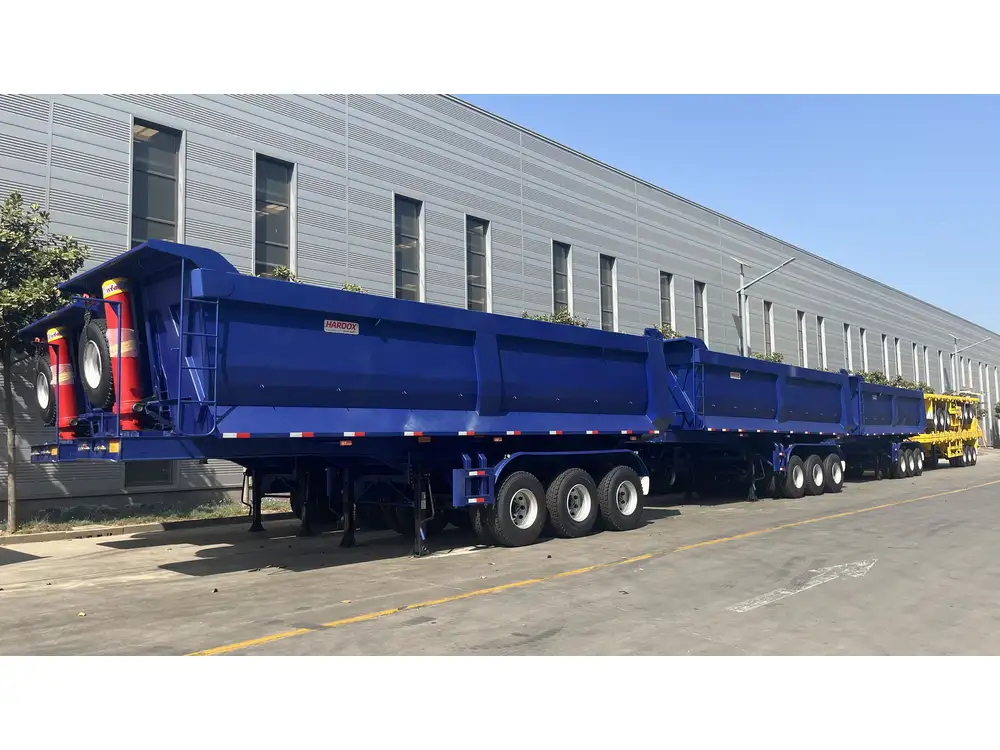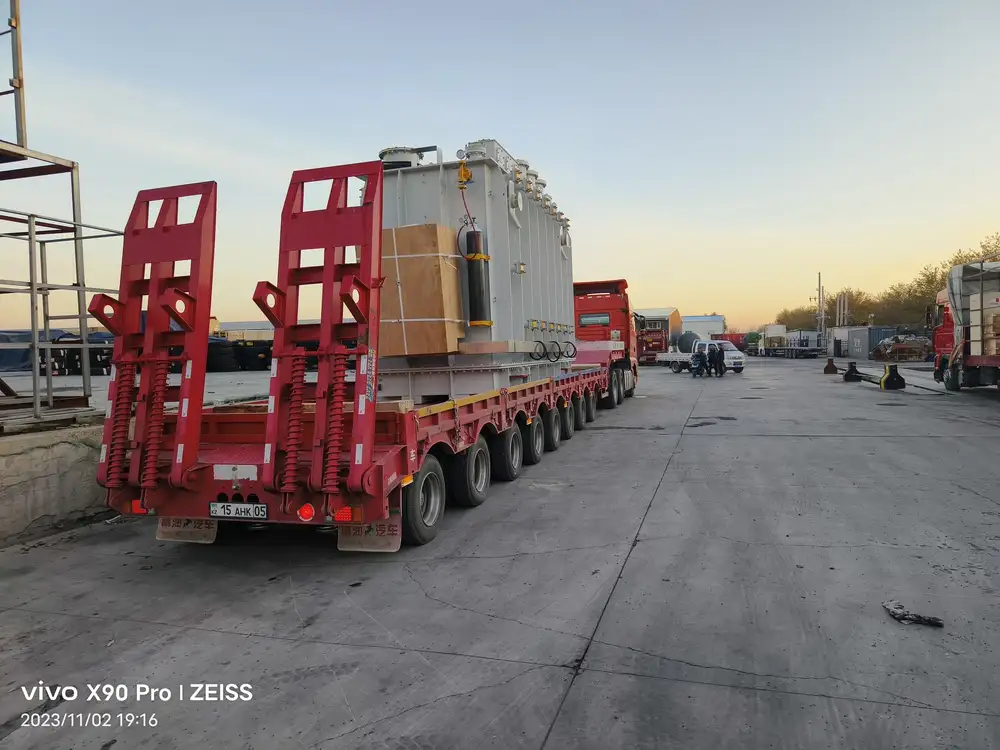Maintaining the functionality of your dump trailer is pivotal for optimal performance, and ensuring that the battery is fully charged is a crucial aspect of this maintenance. In this guide, we will detail the process of charging a dump trailer battery from a truck, addressing potential obstacles, solutions, and best practices to enhance efficiency.
Understanding Battery Charging Basics
Before delving into the methods to charge a dump trailer battery from your truck, it is essential to understand a few fundamental concepts related to battery charging:
Types of Batteries
- Lead-Acid Batteries: The most common type found in dump trailers, known for their affordability and reliability.
- AGM (Absorbent Glass Mat) Batteries: These batteries provide better performance and longevity under certain conditions but are more expensive.
- Lithium-Ion Batteries: Emerging in the commercial space, they offer faster charge times and a longer lifespan but at a higher upfront cost.

Charging Techniques
- Direct Charging: Connecting the truck to the battery using jumper cables or a dedicated charging system.
- Smart Charging: Using chargers that automatically adjust the charging process based on the battery’s needs.
Preparing for Charging
Safety First: Essential Precautions
- Personal Protective Equipment (PPE): Always wear gloves and safety goggles to prevent injury from battery acid or sparks.
- Ventilation: Ensure you’re working in a well-ventilated area since hydrogen gas can be emitted during charging.

Tools Required
| Tool | Purpose |
|---|---|
| Jumper Cables | To connect the truck’s battery to the trailer’s battery. |
| Multimeter | To check the battery voltage before and after charging. |
| Battery Charger | If using a dedicated charger. |
| Personal Protective Gear | For safety during the charging process. |
Step-by-Step Charging Process
Step 1: Assess the Battery Condition
Before initiating the charging process, assess the condition of the dump trailer battery:
- Visual Inspection: Look for any signs of corrosion, cracks, or leaks.
- Voltage Check: Use a multimeter to measure the battery voltage. A fully charged 12-volt battery should read around 12.6 volts. If the voltage is significantly lower (below 12.0 volts), charging is necessary.

Step 2: Connect the Charging System
Direct Charging with Jumper Cables:
- Positioning: Park the truck close enough to the trailer so the cables can reach both batteries without stretching.
- Connection Sequence:
- First, connect the red positive (+) clamp to the positive terminal of the dump trailer battery.
- Second, attach the other red positive (+) clamp to the positive terminal of the truck’s battery.
- Third, connect the black negative (-) clamp to the negative terminal of the truck battery.
- Finally, attach the other black negative (-) clamp to an unpainted metal surface on the dump trailer (not directly to the battery) to prevent sparks.
Connection Diagram:
[Truck Battery +] ----- [Red Clamp] ----- [Trailer Battery +]
|
[Black Clamp (to ground)]
|
[Truck Battery -] ----- [Black Clamp]Step 3: Start the Truck
Once all connections are secure, start the truck. The engine will generate power, allowing the truck’s battery to charge the dump trailer battery. Check the multimeter during this process to ensure the voltage increases proportionately.

Step 4: Monitor the Charging Process
Let the truck run for a minimum of 15-30 minutes. During this time, periodically check the voltage on the dump trailer battery to ensure it’s moving toward the desired charge level. If the voltage remains stagnant or decreases, disconnect immediately, as this could indicate faulty wiring or a dead battery.
Step 5: Disconnecting the Cables
- Turn Off the Truck: Always turn off the truck’s engine before disconnecting the cables.
- Disconnection Order:
- Remove the black clamp from the dump trailer’s ground.
- Remove the black clamp from the truck battery.
- Remove the red clamp from the truck battery.
- Finally, remove the red clamp from the dump trailer battery.
Step 6: Final Voltage Check
After disconnecting, use the multimeter again to check the battery voltage. A fully charged lead-acid battery should read between 12.4 to 12.6 volts. If it’s still low, consider a more thorough inspection or professional help.

Troubleshooting Common Issues
Despite following the steps carefully, you may encounter issues. Below are common problems and their respective solutions:
Problem: Battery Not Charging
- Check Connections: Ensure all cable connections are secure and clean.
- Inspect Wiring: Look for any fraying, shorts, or corrosion.
- Battery Condition: If a battery is old or damaged, it may need replacement.
Problem: Frequent Battery Drain
This could signify a deeper issue such as:
- Faulty Alternator: Unable to charge the battery effectively while the truck is running.
- Parasitic Drain: Electrical components in the trailer may be consuming power when not in use.

Problem: Signs of Overheating
If the battery or connections get excessively hot, disconnect immediately. This may signal:
- Incorrect Charging Current: Ensure you are using the appropriate charging settings.
- Battery Defects: A failing battery can show signs of overheating.
Maintenance Tips for Longevity
Routine Checks: Regularly inspect the battery and its connections for corrosion and wear.
Proper Storage: If not used frequently, store the battery in a cool, dry place and consider using a trickle charger.
Use the Right Charger: Invest in a smart charger suited for your battery type to avoid overcharging and undercharging.
Conclusion
Charging your dump trailer battery from a truck is not only feasible but can be done efficiently with the right knowledge and tools. By following the outlined steps and adhering to safety protocols, you can maintain your battery effectively, ensuring that your trailer remains operational when you need it most. Be proactive in your maintenance approach, and never hesitate to consult a professional if you encounter persistent issues.
The ability to charge your dump trailer battery from your truck not only demonstrates self-sufficiency but also enhances the operational readiness of your equipment. Implement the insights shared in this guide to ensure your dump trailer remains a reliable asset for your transportation needs.



